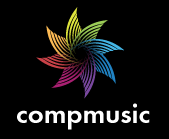Technology and Multiculturality
[Article published in the daily newspaper La Vanguardia on Sunday 17th 2016. English translation of the original text written in catalan.]
The violin, typewriter or mobile are examples of technological devices that were born in certain contexts to meet specific needs. For example, the keyboard layout of the typewriter was born in the late nineteenth century in the US to write in English. This design was adapted to other languages and new devices, but the original design has had a strong influence. It has been virtually impossible to develop and use new keyboard layouts designed to write in other languages and for new devices, such as the computer or mobile.
The technologies that are more related to culture, like for language or music, are particularly sensitive to this issue. They are developed in certain cultural contexts and then they are adapted to other cultures, with more or less success. Let’s put two examples, violin and modern piano.
The violin is the result of a series of Italian luthiers of the sixteenth to the eighteenth centuries. This instrument spread around the world adapting well to the personality of many cultures. The piano had its important development in the Europe of the eighteenth and nineteenth centuries. It also spread rapidly, but, unlike the violin, it did not become part of many musical cultures. It served to spread European culture worldwide. The piano keys structure the musical notes with a very determined and inflexible way, based on European classical music and therefore not suited to the melodic characteristics of many musics.
Today, the technologies that best represent modern society are those around the Internet. Usually they develop in the cultural context of the US and they are distributed in the global market. Some of these technologies are like the violín, flexible and adaptable to many cultures. Others are like the piano, not easily adatable and carriers of a particular culture. We could say that they help promote the Anglo-Saxon cultural colonialism. Common tools like Google, Amazon or Spotify are closer to the example of the piano than to the violin.
We must be aware of the cultural bias of many of the technologies we use, and we should promote the technological developments that take into account the different cultural realities that shape our world.
Xavier Serra
Original article:


